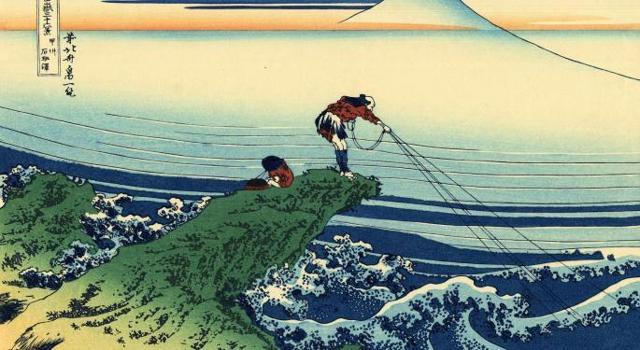
image source: benzinga.com
I don’t often write about companies with market caps as small as $55 million, but when I do, it is because I see a lot of growth potential and a compelling business model. Many investors and traders can get lured into buying the stocks of young companies that are many years away from profitability. This can be the case with biotech companies that don’t yet have an FDA approved drug on the market. Every biotech might have an interesting story and a serious disease to address. However, some companies may take decades to become profitable and the stock prices can fizzle out quickly when the company faces roadblocks along the way. With that in mind, there is a young small company that has plenty of growth potential and is already highly profitable. It is not a biotech, but an art-related trading company.
Takung Art Company (OTCQB:TKAT) is a China-based company that has created a business model that allows art collectors and investors to buy and sell ownership units of paintings, calligraphies, jewelry, and precious stones. The company is essentially allowing customers to buy art like stocks. Instead of buying shares in a company, Takung’s customers buy pieces of art, which it calls units on its online trading system. The artwork being traded on Takung’s platform is considered valuable from renowned living artists. Takung uses expert opinions from third parties to appraise the artwork.
Interestingly, the company began as a biotech under the name Cardigant Medical back in 2009. It was focused on developing treatments for vascular disease. It restructured in 2014 and assigned the Cardigant Medical business to Cardigant Neurovascular. Then, a few months later, the business of Hong Kong Takung was acquired through a reverse merger. The company was later incorporated and became the Takung Art Company. As a result of the restructuring, it is no longer operating as a biotech and is now focused on the art trading business.
Takung doesn’t have any direct competition. No other company provides this service in China. There are indirect competitors such as auction houses and art galleries that buy and sell similar art-related items. However, Takung has the competitive advantage of being the sole company that allows investors to purchase units of art instead of entire paintings. Therefore, Takung operates a monopoly.
Not all investors can afford or desire to purchase entire paintings or other valuable art. Takung allows investors to invest in something other than stocks. The recent downturn in China’s stock market is positive for Takung’s business as investors are likely to look for alternative investments for diversification.
Takung generates revenue from listing fees, management fees, trading commissions, and fees from authorized agents. The company obtains listing fees from the owners of the artwork which equates to 22.5% and 47% of the offering price. Management fees are charged to traders to cover insurance, storage, and transportation for artwork [$0.0013 per 100 artwork units per day]. Trading commissions are charged at a rate of 0.3% of the transaction amount (not counting promotions). Authorized agents are charged an annual fee for the right to bring their network of artwork owners to the company’s trading platform. All of this provides Takung with a steady flow of revenue. Its revenue increased 120% in 2015 over 2014.
The company is seeing strength in 2016. Takung generated $813 million in transaction value for the first three months of the year as compared to $198 million in the same period last year – a 311% increase. Given the strength that Takung is achieving, I would expect the company to grow revenue at a significant pace this year. This growth is likely to catalyze the stock as the results are reported.
Strong Fundamentals
Takung achieved a gross margin of 93% in 2015, which is up from 91% in 2014. The company can achieve such high margins because it is essentially a toll collector for the artwork traded on its platform. This is a result of having a low cost of revenue of under 10%.
The company generates positive operating and free cash flow. Since Takung had no capital expenditures last year, it had $5 million in operating and free cash flow. The cash flow should grow at a strong pace given the growth in transactions that Takung is achieving so far this year. The positive free cash flow shows that Takung is a healthy sustainable business. As the free cash flow grows, the company can consider using it for share repurchases to help boost earnings and to reduce share dilution for more shareholder value.
The balance sheet is strong. Takung ended 2015 with 1.5X more current assets than current liabilities. Takung also has 1.6X more total assets than total liabilities. The company has just under $11 million in total cash with zero debt. Therefore, it is in a good position to spend some cash and has room to take on some debt if needed to expand the business.
Since the company is achieving triple-digit increases in transaction value, strong revenue growth is likely to continue. I expect investors in China to continue to diversify into alternatives such as art since they experienced a recent sharp decline in the China stock market. Takung provides investors with a convenient and cost-effective way to own units of valuable artwork.
Low Valuation
Takung is trading at 10X TTM earnings and with an EV/EBITDA of only 6.21. Although the company is not yet officially lumped into a specific industry, I compared it to other small-cap investment brokerage firms. A-Mark Precious Metals (NASDAQ:AMRK) and Gain Capital Holdings (NYSE:GCAP) are trading with higher valuations at 13X TTM earnings and at 12X TTM earnings, respectively.
Takung’s growth potential is likely to be larger than these small-cap brokerage firms. A-Mark and Gain Capital are no slouches with double-digit expected growth in earnings for this year and next year according to consensus. Takung’s potential could be even larger since it is achieving triple-digit gains in transaction value. Since Takung is earning fees on those transactions, the company could achieve triple-digit gains in earnings this year as it did in 2015. Such growth is likely to catalyze the stock with outsized gains as earnings are reported.
The Risks
China’s economic growth is slowing down from 7% annual GDP growth in the past to an expected 6.4% to 6.8% for 2016. If the slowdown is worse than expected, it could cause traders to cut back on their investments and slow Takung’s growth rate. I don’t think there is a high probability of that happening, but it does remain a risk for the business.
The company currently does not have any insurance to cover physical damage to Takung’s headquarters in Hong Kong or for an interruption of its business. It depends on its electronic trading system to earn fees, so an expected disruption could cause a significant loss of revenue. Takung currently believes that the costs of insurance exceed the benefits of having it.
Investors could be concerned that Takung is a China-based company, which are typically perceived as riskier than U.S. based companies. However, the CEO has signed off stating that the company complies with the Sarbanes-Oxley Act of 2002. Takung is also independently audited by certified public accountants, AWC [CPA] Limited. So, as long as it is acting in good faith, there should be no issues regarding business integrity.
Conclusion
All told, I think that the positives facing the company will outweigh the possible risks. Takung is under followed and undervalued with the potential for alpha-rich earnings. Takung is marketing its services to culture and art exhibitions and with online advertising. This is likely to bring those passionate about art and investing into the electronic trading platform that Takung operates. The company is likely to attract more than just the very wealthy since it allows investors to purchases units instead of entire works of art. The company has momentum in the form of triple-digit gains in transaction value, which is likely to continue as investors in China look to diversify their money into art after the recent turmoil in the China stock market. The strong outsized gains in transactions is likely to lead to outsized gains in revenue, earnings, and thus for the stock price.
[“source-Business2community”]




